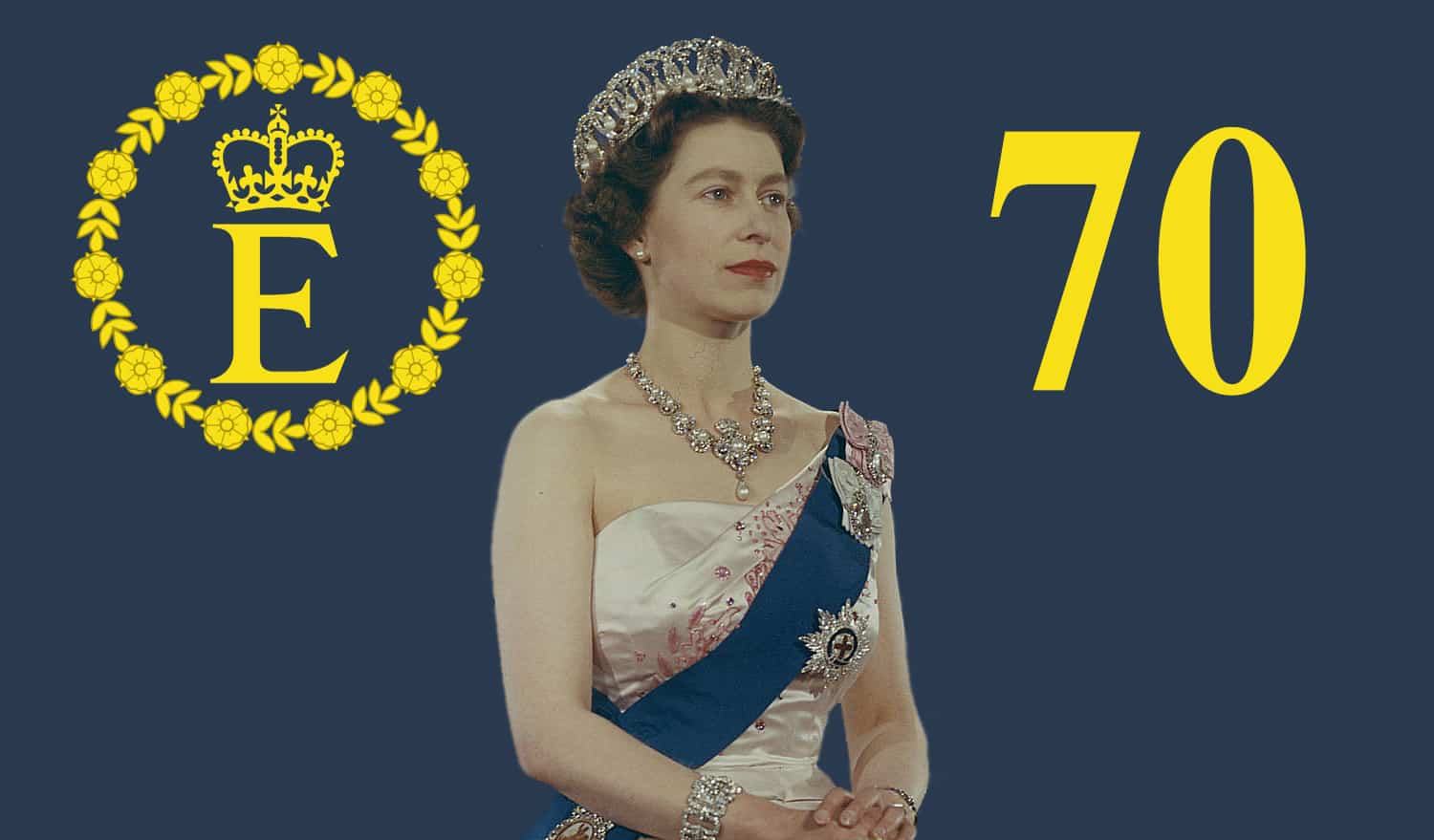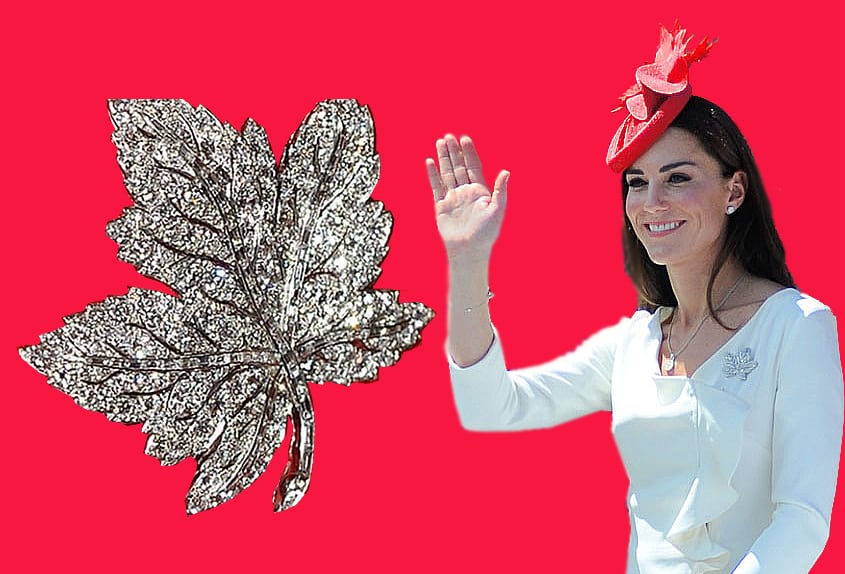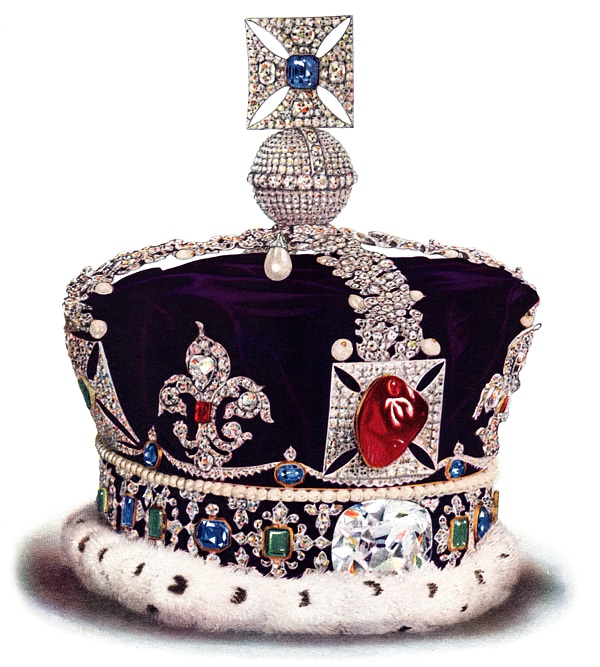Blog
Home » Diamonds blog » AS BRITAIN CELEBRATES 70 YEARS OF ELIZABETH II’S REIGN, A TRIBUTE TO THE WORLD’S MOST FAMOUS JEWELRY COLLECTION
Focus on

As the United Kingdom and the British Commonwealth celebrate the 70th anniversary of the accession to the throne of Queen Elizabeth II on February 6, 1952, it’s sensible to pay tribute to the single individual who over an unbroken seven decades has possibly done more than any other to spotlight the beauty of the diamond in jewelry.
Elizabeth owns what quite possibly is the world’s most valuable jewelry collection, although it is necessary to differentiate between what is hers privately and what is part of the Crown Jewels.
She is said to have more than 300 items in her own collection, including 98 brooches, 46 necklaces, 37 bracelets, 34 pairs of earrings, 15 rings, 14 watches and five pendants. These are what she is generally seen wearing when out and about. The Crown Jewels, in contrast, are worn only at coronations, the last taking place in 1952 when the St. Edward’s Crown was placed on Queen Elizabeth II’s head, and the annual State Opening of Parliament, where the Imperial State Crown is used.
The queen is not the only royal to make regular use of jewelry from her personal collection. By way of example consider the Queen Mother’s Maple Leaf Brooch.

The Queen Mother’s Maple Leaf Brooch, and on the left is seen the Duchess of Cambridge wearing it on her first royal tour of Canada in 2011.
Featuring diamonds set as a maple leaf, Canada’s national symbol, in was seen being worn in 2011 by Kate, the wife of Prince William and the Duchess of Cambridge, on her first Royal Tour to the country in 2011. The brooch originally had been commissioned by the Queen’s father George VI for his wife and created by Asprey, in honor of their first trip to Canada in June 1939. Elizabeth II wore the brooch on her first trip to Canada in 1951, before she became queen, and she lent it to her daughter-in-law Camilla, the Duchess of Cornwall, on her first official trip to Canada in 2009.
GIFTED, INHERITED AND FOUGHT OVER
Not all the jewelry in the collection is ordered and bought. In fact, a good deal of it is gifted or inherited. British royals rarely give their jewelry away, but instead pass it from one generation to the next.
That can make things complicated. In 1714, during the rue of George I, the royal houses of Great Britain and the Kingdom of Hanover, in what is today Germany, were joined as a result of marriage. Initially, the Hanoverian monarchs careful kept the heirlooms of the two realms separate.
But King George III, whole ruled over Britain from 1760 to 1820, gifted half of the British heirlooms to his bride, Charlotte of Mecklenburg-Strelitz, as a wedding present, and when she died in 1818 she left the jewels to the House of Hanover.
In the Kingdom of Hanover the line of succession always went through male heirs, unlike in Britain, when Queen Victoria acceded to the throne in 1837. This ended the union between the two royal houses, and Victoria’s uncle Ernest Augustus, who now was king of Hanover, demanded a portion of the jewelry. But the British royal refused, saying they had been bought with her own country’s money.
Victoria’s husband, Prince Albert, who was also German, having been born in the Saxon duchy of Saxe-Coburg-Saalfeld, suggested that a financial settlement be made, but the British parliament resisted, telling the queen that it would neither purchase the jewels nor loan funds for the purpose. A parliamentary commission was created and in 1857 it found in favor of the House of Hanover. Several months later the jewels were handed over. All that Victoria managed to keep was a string of pearls.
THE CROWN JEWELS
The Crown Jewels themselves comprising more than 100 objects and more 23,000 gemstones. No real value has been placed upon them, but essentially they are priceless, because of their cultural, historical, and symbolic value.
Until 1649, during the English Civil War led by Oliver Cromwell the Crown Jewels were kept at Westminster Abbey, the royal church in the center of London. But when King Charles I was executed and a republic was declared, parliament decided to sell off the royal assets.
The Crown Jewels were brought to the Tower of London and destroyed. Precious gems were sold off and the gold melted down and turned into coins stamped “Commonwealth of England.”
But in 1660 the monarchy was restored and Charles II ordered new jewels for his coronation in 1661. They still make up a large proportion of the Crown Jewels collection, which has been protected in the Tower of London ever since.
Many of the jewels date back to 1661, but not necessarily the diamonds that are set in them. The Sovereign’s Scepter with Cross has been used at every coronation since Charles II’s, for example, but it was transformed in 1910 for George V by the addition of the Cullinan I diamond, which was cut from a 3,106-carat rough stone discovered in South Africa five year earlier. At 530.2 carats, it is the largest colorless cut diamond in the world.

The Imperial State Crown, with the 317-carat Cullinan II diamond at its base.
The St. Edward’s Crown, which was made for the coronation of Charles II to replace the medieval crown that had been melted down after the execution of King Charles I, was adorned for coronations with hired gemstones until 1911, when King George V, Elizabeth’s grandfather, had it set permanently with semi-precious stones.
Not so the Imperial State Crown. It was made was for the coronation of Elizabeth’s father, King George VI, in 1937, replacing the crown made for Queen Victoria in 1838, it is set with 2,868 diamonds, 17 sapphires, 11 emeralds, 269 pearls and four rubies. While its center stone is the 170-carat Black Prince’s Ruby, which actually is a spinel, it also includes the 317-carat Cullinan II, which some is called the Second Star of Africa.
